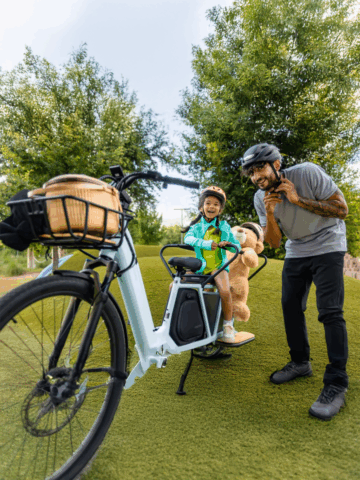From July 2021 to July 2022, there were 1,206 button batteries ingested in the United States. Most of these ingestions occurred in children under the age of 5 years and were especially frequent in one-year-olds.
Because button batteries are widely used to power electronics and children’s toys, some curious kids may find these around the house and put them in their ears, nose or mouth. Unfortunately, ingesting a button battery can make them very sick.
Here, CHOC safety and injury prevention experts advise parents on how to prevent their kids from swallowing button batteries, and how to respond if they do.
What are button batteries?
Button batteries are small, shiny, coin-shaped batteries. Button batteries may also be referred to as coin batteries, watch batteries or any small, round-shaped battery. They’re used in devices like watches, remote controls, key fobs, hearing aids and children’s toys. Button batteries may be dangerous for toddlers and kids, who easily can put them in their mouths, ears or noses.

A button battery put into a child’s mouth can get stuck in the windpipe and block breathing. Chemicals in the batteries can cause serious burns when swallowed or if stuck in the body.
What happens if a child swallows a button battery?
A swallowed button battery or one that is lodged into the nose or ears is a medical emergency that may require surgery. If the battery is in the esophagus (the tube that connects the mouth to the stomach), it can discharge and burn a hole through the wall of the esophagus and be life-threatening – especially if it causes gastrointestinal bleeding or bowel perforations.
If the button battery is in the stomach and is causing symptoms, it will need to be removed urgently. If the battery is in the stomach and not causing symptoms, it may be able to stay there and be followed closely by a medical provider depending on the size and the age of the child.
What are the signs and symptoms that a child has swallowed a button battery?
If your child has swallowed a button battery, they show the following symptoms:
- Sore throat.
- Trouble swallowing.
- Vomiting.
- Coughing.
- Stomach pain.
- Foreign body sensation, like feeling like they have a lump in their throat.
- Refusing to eat or drink.
If the battery is stuck in the ear or nose, you might see blood or other drainage.
What should parents do if their child has swallowed a button battery?
Take your child to the nearest emergency room (ER) or call 911 immediately if a button battery is missing or you think your child might have swallowed a battery. Don’t wait until you see the signs of a swallowed button battery before getting help.
If your child is over the age of 1 year, give them two teaspoons of honey every 10 minutes (for up to six doses) to help coat the battery and prevent it from discharging. However, only do this if it is readily available on your way to the hospital; do not delay going to the ER to give your child honey.
If you can, call the national poison control hotline (1-800-222-1222) for help on your way to the hospital.
Do not give your child honey if they are under 1 year of age for it can cause infant botulism.
Is there anything parents should NOT do if they suspect their child swallowed a button battery?
If a parent suspects that their child swallowed a button battery, they should NOT:
- Induce vomiting.
- Delay in going to the ER.
- Let the child eat or drink anything after ingesting the battery.
What’s the typical treatment for swallowing a button battery?
If an x-ray confirms that a button battery is stuck somewhere in your child’s body, it’s vital that is it removed immediately. The provider will likely perform an upper endoscopy — which involves using a long, flexible, lighted tube called an endoscope guided through the patient’s mouth and throat to remove the battery.
Get more home safety tips from CHOC experts.
What can parents do to safely store their button batteries and prevent kids from swallowing them?
To help prevent children from getting a hold of button batteries, parents should:
- Keep loose button batteries locked away.
- Recycle or throw out used batteries properly. Many communities have battery drop-off bins where you can take used batteries.
- Know which devices in their home use this type of battery and ensure the lids of the devices are closed tightly.
- When choosing electronics or toys with button batteries, choose items that require a tool (like a screwdriver) to open/close the battery compartment.
Get more expert health advice delivered to your inbox monthly by subscribing to the KidsHealth newsletter here.
Get more safety and injury prevention tips from CHOC experts
More children are affected by injuries than all other childhood illnesses and diseases combined. Most of these injuries are predictable and preventable. Here’s how to keep your child safe.





